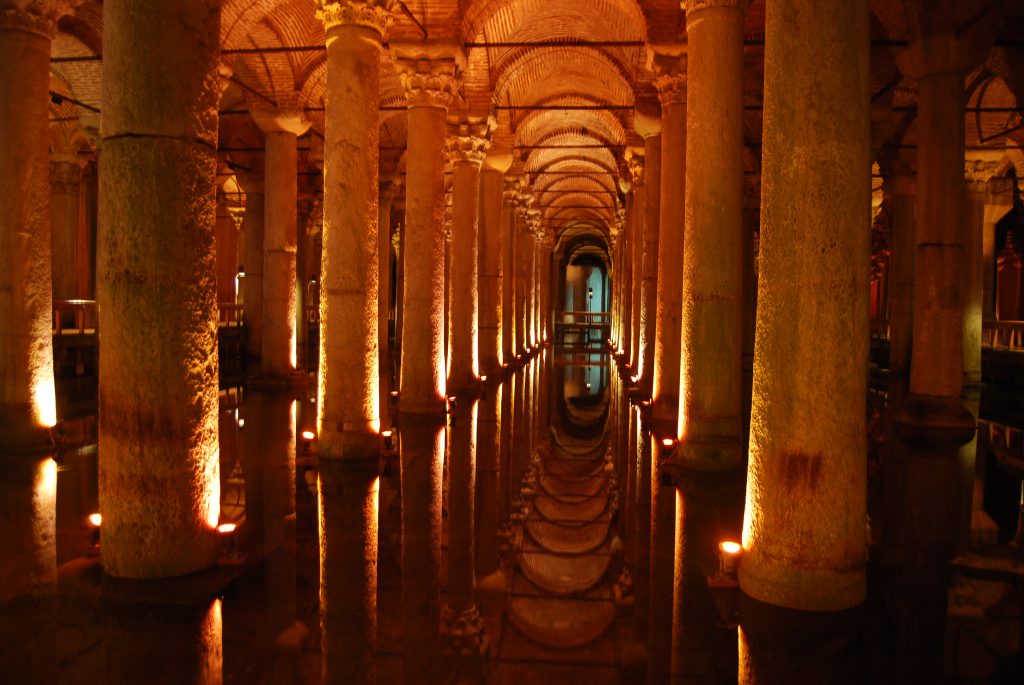Author: Al Ridenour
Paperback: 248 pages
Publisher: Feral House (October 4, 2016)
Language: English
ISBN-10: 1627310347
ISBN-13: 978-1627310345
Price $16.50
Reviewer: Catherine Poloynis
“Christmas requires the Darkness. The holiday we’ve spun from sugarplums… can’t exist without those dark edges where imagination blooms” – Al Ridenour
The Krampus is a captivating image. Horned, menacing, hoofed and hairy, the author describes Krampus as the Shadow of Saint Nicholas. Like many Shadow images, Krampus grabs us and triggers our curiosity to know more.
Krampus is but one player in a host of dark and bewildering characters presented in The Krampus and the Old, Dark Christmas: Roots and Rebirth of the Folkloric Devil. In his book about the historic Christmas pageants of central Europe, Al Ridenour has investigated these symbolic figures in detail, searching for their origins, transformations over time, and exploring their permutations in various local traditions. He makes insightful points about the psychological function of these ancient traditions and their continuing importance for us today.

photo: Bloom Magazine
Krampus as shadow
“The figure of Krampus cannot be understood apart from that of St. Nicholas,” writes Ridenour. He explains how the Krampuslauf (Krampus run) evolved from medieval Christmas and Passion plays which included the Devil. A great deal of historical information is provided about the integration of the Nikolausspiel (Nicholas Play) with the rural Alpine Perchtenlauf (raucous parade of mountain spirits). The author brings home the realization that Christmas cannot be fully understood without both the Christian foundations and the “indigenous pagan folklore” that melded to form the modern Nikolaus-Krampus traditions.
krampus and the female side
Ridenour does not leave women out the pageantry. Although not traditional participants in the Krampuslauf, which can be brutal, he reports a good deal of female participation in the action. The Christkind (Christ child) participant in the event is traditionally represented by a young girl. The author makes remarks on the androgynous symbolism of this.
Frau Perchta ( Frau Holle), the archetypal witch featured prominently in Grimm’s Fairytales, is the matriarchal leader of an event called Perchtenlauf, a raucous

photo Wikipedia
parade of men and women dressed as witches and mountain spirits. The author writes about the folklore that surrounds Frau Perchta and her connections with the Germanic goddess Holde, her transition into the Frau Perchta, and the effect of a history of suppression and persecution by the Church. Several of the Perchtenlauf characters are individually examined in-depth, and they are very entertaining.
krampus and totenvolk
The section on the Totenvolk, a throng of wandering ghosts, is noteworthy. These specters follow an habitual route, sometimes passing though homes to create din and occasional damage. I recalled that Carl Jung was visited by a throng of Anabaptist ghosts, an experience recounted in Memories, Dreams, Reflections. It sounds as though Dr. Jung may have had a visit from the Totenvolk.

krampus must come
In the final chapter, ‘Why the Krampus Must Come’, the author says,
“We crave somehow to get inside these stories and images, to walk among the characters that fascinate us, even to become them.”
Krampus is “the real thing,” he says, a living myth that is experienced and acted out in “unpredictable, living interactions.” The old, dark Christmas traditions continue, through centuries, to feed the unconscious needs of people facing the frozen times of winter. As a figure of ritual importance since the pre-Christian era, the Krampus is of archetypal significance. He lives in the cultural unconscious … and bidden or not, he will come.
Conlusion:
There is a wealth of information in The Krampus and the Old, Dark Christmas. Ridenour succeeds in weaving together the strands of an enormous database of information to create a fascinating and enjoyable reading experience. I was impressed with his depth of research and his ability to organize it into a conversational flow. I enjoyed reading about his travels through Europe to experience the Krampuslaufen in various regions of Austria, Germany and Switzerland. This is not a book of “library research” but an all-in endeavor during which he consulted Krampuslauf participants and the regional folk to obtain first-hand knowledge and perspective on these traditions.
The book is generously illustrated with beautiful professional photographs of costumes, masks and events. It includes historical reproductions of old prints and woodcuts, and the earliest photograph of a Krampus Pass. I was impressed with the quality of paper and vibrant color.
Rich in visual imagery and cultural history, this book is sumptuous reading for anyone interested in-depth psychology, mythology, history, shamanism and religion, and more. I recommend it whole-heartedly.
Our Current Courses (Click to find out More)
Sign up for our free e-book: 10 easy ways to instantly improve your dream memory

